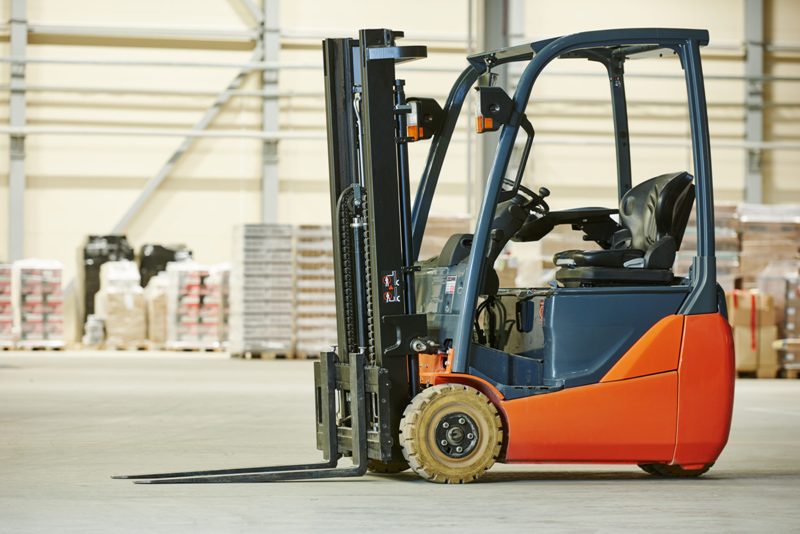Forklifts are one of the major workforces of productive warehouses and facilities. But like using any heavy machinery, they are also one of the significant hazards in workplaces.
Forklift operators and other employees that work around heavy equipment have a higher risk of hazards, including tip-overs, collisions, or struck-by conditions, to name a few. Fortunately, forklifts are even safer than before, but only when operators and employees will follow the right safety procedures properly.
To know more about how to handle forklifts safely, here are a few helpful tips:
1. Get Certification
Many accidents are caused by poor training. Because of this, it’s crucial to make sure that forklift operators are those who are trained and licensed according to OSHA standards.
Employers will need to evaluate operators’ performances once every 3 years, providing supplemental training through lectures, demos, videos, and software training.
2. What Should You Wear?

All forklift operators need to be dressed with the proper safety wear and protective clothing, which includes:
-
- A hard hat
- Safety shoes to prevent potentially disabling accidents
- Hi-Vis jackets for everyone on site
- Tight-fitting clothing to prevent fabrics from getting trapped in machinery
3. Conduct Regular Safety Inspections
During training, forklift operators need to be taught how to conduct regular safety inspections through pre-use safety checks and properly examining forklifts before using them each time. Here are the things you should inspect before using the forklift:
- Brakes
- Controls
- Steering
- Mast
- Tires
- Warning Devices
If you see any faults or issues, along with signs of significant wear and tear, then the vehicle needs to be taken out of action until the issues are resolved. All repairs will be carried out by trained and qualified engineers or mechanics. Every inspection, along with its results and action is taken, need to be recorded as evidence of the operator’s commitment.
4. Maintain Proper Visibility
As you use the forklift, the forks should be kept low to the ground so you get clear and forward visibility. If loads restrict visibility, then operate the forklift in reverse. You always need to have a good view of the racks as you position the load.
Besides that, here are a few practices to adopt:
- Make eye contact with pedestrians and fellow workers
- Look at the direction you are traveling in
- Utilize rearview mirrors for visibility
- Use headlights at night or in environments when you need additional lighting
5. Avoid Hazards

It’s crucial to be familiar with the area you plan to use the forklift in. Even a small unseen bump can cause the forklift to tip, potentially resulting in injuries to yourself, the vehicle, and others around it. Here are practices to follow so you can avoid hazards that may cause accidents:
- Be aware of any bumps, lumps, along with slippery or uneven surfaces
- Avoid areas with loose materials, floorings, and objects
- Slow down when approaching corners and doorways, especially when visibility is limited
- Honk your horn when warning pedestrians as you approach the area
- Maintain safe stopping distances every time, especially when near operatives and vehicles
6. Follow Safe Loading Procedures
Another major cause of forklift accidents is from unsafe loads. If your loads are unevenly balanced, too heavy or high, or unsecured, then the vehicle may tip-up, which can result in accidents that could have been prevented.
Make sure that your loads is slightly tilted back with forks sitting low while the vehicle moves. Also, loads need to be stacked correctly, spread across the forks. You can balance the load by using pallets or skidding, along with using bindings, ropes, or straps to secure them.
Besides this, you should never exceed the forklift and its attachment’s maximum capacity, nor should people be on the forks. Before you move off, check the load properly and check for overhead obstacles before you stack upwards.
As you drive, move at the proper speed, do NOT Overspeed. Furthermore, do not stop, change directions, or turn suddenly, or make fast turns as you move too fast. If ever the forklift starts tipping, don’t jump off the vehicle but grip the wheel and brace your feet.
7. What Happens After the shift
Once you have ended your shift, make sure that you return the forklift to its designated area, safely in authorized space. Don’t block any pathways or obstruct exits and entrances, and lower the forks completely until they fit the floor. Apply the parking back, switch off the engine, remove your key from its ignition, and you’re good to go!
Wrapping It Up
I hope that this list of forklift safety measures helped you out! Whether you are the head of a warehouse or forklift operator yourself, keep these tips in mind so you can keep the workplace safe and healthy.
If you have questions or want to share your tips and experiences when handling a forklift safely, share them in the comments section below. All your thoughts are much appreciated!






